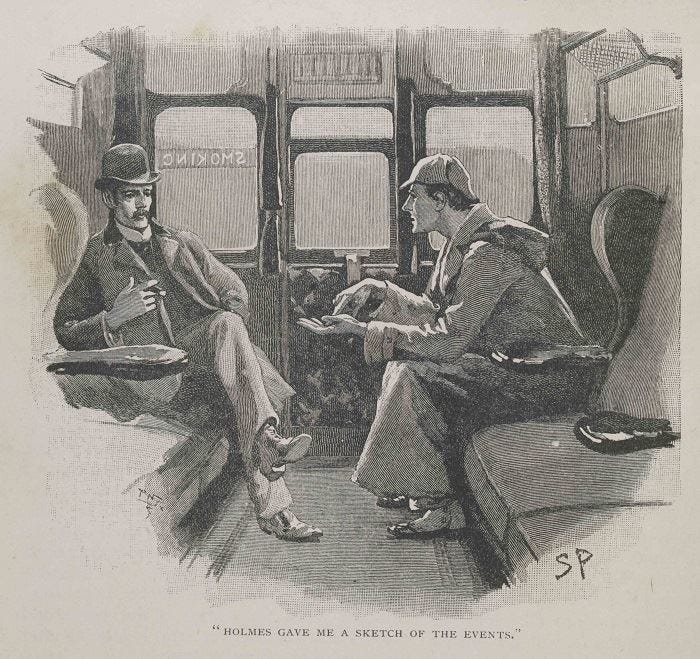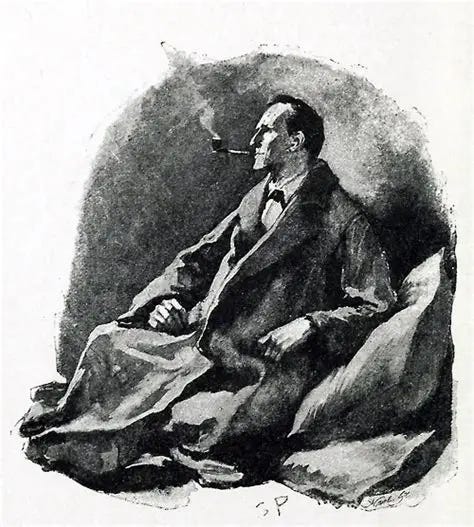The Birth of a Legend: Sherlock Holmes in Print
This week in history: The publication of The Adventures of Sherlock Holmes by Arthur Conan Doyle
On 31st October 1892, George Newnes Ltd published a collection of twelve short stories that would forever shape the detective genre: The Adventures of Sherlock Holmes by Arthur Conan Doyle. Bound in pale cloth with an illustration by Sidney Paget, the volume gathered tales that had already captured the imagination of thousands of readers in The Strand Magazine. In book form, they confirmed Sherlock Holmes’s place as the most famous fictional detective in the world.
Arthur Conan Doyle was trained as a physician, and it was in the quiet hours between patients that he began writing. His first Holmes novel, A Study in Scarlet (1887), introduced readers to the consulting detective and his loyal companion, Dr John Watson. A second novel, The Sign of Four (1890), followed. Yet it was not until Holmes appeared in short story form that his popularity truly soared.
In 1891, Conan Doyle agreed to write a series for the newly founded Strand magazine. Each month a fresh mystery appeared, complete with Sidney Paget’s atmospheric illustrations. Stories such as “A Scandal in Bohemia,” “The Red-Headed League,” and “The Adventure of the Speckled Band” became instant favourites. Readers queued for the magazine, children cut out the pictures, and Conan Doyle found himself propelled to fame.
The Adventures of Sherlock Holmes brought together the first dozen of these stories between hard covers. Published on the last day of October, it sold briskly, appealing not only to devoted readers of The Strand but also to those discovering Holmes for the first time.
The collection established many of the elements that have since become inseparable from detective fiction: the brilliant but eccentric sleuth, the faithful narrator, the baffling case solved by deduction rather than chance. Holmes’s London was a place of gaslight and hansom cabs, of sinister villains and secret plots — vividly brought to life by Paget’s illustrations.
Conan Doyle himself regarded the stories as a distraction from what he considered his serious historical writing. He once described Holmes as “a lower stratum of literary achievement,” and by the early 1890s he was already contemplating killing off his creation. Yet the detective proved far more enduring than his author’s ambitions.
Today, The Adventures of Sherlock Holmes remains in print across the world. Its stories have inspired countless adaptations in theatre, film, and television, and the very image of the detective — deerstalker, pipe, and magnifying glass, owes much to Paget’s illustrations.
When the collection first saw the light of day in the year 1892, neither Sir Arthur Conan Doyle nor his readers could have conceived that they were present at the birth of a literary immortal. From the moment Mr. Sherlock Holmes first stepped forth from the pages of The Strand Magazine, he took firm possession of the public fancy and has ever since retained their interest.
I hope you’ve enjoyed this foray into history. Please subscribe to enjoy our weekly newsletter - The Rushford Times.
CLICK HERE to read more History and Happenings articles.



